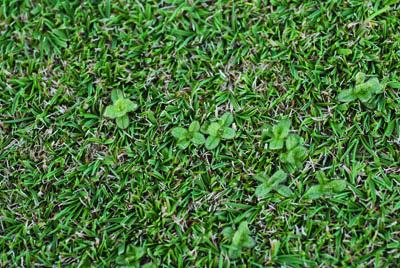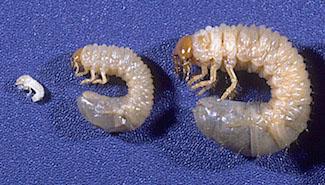
It is a little-known fact, or maybe a well-known one, that Ohio State professor David Gardner, Ph.D., is as passionate about statistics as he is about growing turf and killing weeds. He even teaches the subject. To combine both passions into a single effort, he has been tracking daily weather patterns in Columbus for the past two decades. When golf course superintendents throughout the state call him for a look ahead to what the warm winter of 2016 might mean in the months to come, Gardner suggests looking back a few years for a predictor, instead.
"I've been tracking weather in an Excel spreadsheet every day for 20 years. No one does things like that," Gardner said. "This is just like the winter of 2012. That would serve as a very good guide."
Documenting agronomic practices always is a good idea, but detailed records can be especially helpful during abnormal weather patterns.
For example, Gardner need only check his spreadsheet to know the average daily temperature in Columbus since December has been 35.8 degrees Fahrenheit, which is similar to the 2012 mark of 36.5. That same document also tells him that the average March 2016 temperature of 46.6 is third-warmest March in central Ohio in the past two decades. Superintendents armed with similar information can use that to predict what might occur this spring and to learn what they did to solve it way back when.
In Gardner's case, an abnormally warm spring has meant especially healthy - and large - winter weeds in his state.
"Weeds like shepherd's purse, hairy bittercress, henbit and chickweed, some are four times larger than they should be," Gardner said.
Gardner suggests such conditions throughout Ohio might warrant going a week or two early on spring weed-control applications.
"(Weeds) have had an extended time to germinate, and that has put some size on them," he said.
"You could plan on putting out most weed-control apps a week or two early, but there is more of a risk of a late-season breakthrough."
The warmer weather hasn't been confined to Ohio. Golf courses from Kansas to Canada to Maine are opening earlier than expected this year.
Warmer-than-average winters in northern climates also can affect soil compaction, says Bill Kreuser, Ph.D., at the University of Nebraska.
"One of the benefits of freeze-thaw cycles is that it can help relieve soil compaction," Kreuser said. "When the ground freezes, the water in the soil expands and pushes particles around causing frost heave. If you don't have freeze-thaw cycles, compaction relief is not as good."
An extended growing season not only affects soils, but diseases as well.
Yellow patch (Rhizoctonia cerealis) and Microdochium patch (Microdochium nivale, and pictured on front page, photo by North Carolina State University) both thrive in conditions like those that have prevailed throughout much of North America so far this year, said Pam Charbonneau, a turfgrass management consultant with DCS & Associates in Ontario.
"Microdochium loves the cool, wet weather," Charbonneau said.
"Yellow patch loves the same conditions as Microdochium. It likes cool, wet weather. We are having a long, cool wet spring."
Charbonneau recommends consulting Paul Vincelli's fungicide guide for control solutions.
"When someone has dones such a good job of compiling so much information," she said, "there is no reason to reinvent the wheel."
Insect pests also are affected by the warmer weather.
 A Tweet by the Soil Arthropod Ecology Lab at the New York State Agricultural Experiment Station indicates that annual bluegrass weevil already is active on golf courses in New York. And wet, warm conditions are perfect for coaxing white grubs out of dormancy earlier than usual, early-season activity comes with risks if temperatures turn cold again.
A Tweet by the Soil Arthropod Ecology Lab at the New York State Agricultural Experiment Station indicates that annual bluegrass weevil already is active on golf courses in New York. And wet, warm conditions are perfect for coaxing white grubs out of dormancy earlier than usual, early-season activity comes with risks if temperatures turn cold again."Mild winters in the cool-season turf zones can be a mixed bag. Many of the insects that overwinter as larvae, like white grubs, expect to go dormant and remain dormant until spring arrives," said Ohio State entomologist Dave Shetlar, Ph.D. "When we have mild winters, these grubs can metabolize some of their fat stores faster than normal, break dormancy and get caught by a late freeze event. We have some super saturated soils at this point, and that can definitely cause problems for insects that have to metabolize, i.e., breath, because of the warmer temps. Other insects, like crane fly larvae, and the winter cutworm seem to thrive in these mild and wet winters. Chinch bugs, billbugs and annual bluegrass weevils overwinter as adults and saturated soils and moderate conditions can increase their mortality, possibly from diseases or them running out of food stores."
Golf courses in the plains states face an entirely different problem when there is a lack of snow cover during winter.
"Light stress is a real problem here," Kreuser said. "The plant can make sugar when it's sunny and cool, and the sun bleaches and kills the leaf down to the crown."
The statistics show, and Gardner should know, that things can change rapidly between now and May.
"The big difference right now between 2012 and 2016 is that while it is warmer than normal here in March (average temp so far are 46.6 for the month) it won't approach the spectacular March of 2012 with its average of 53.8," Gardner said. "April is the great equalizer. Every year the monthly average for April is a degree or two either side of 53.8. I almost think it is akin to nature pushing the reset button."
The statistics don't lie.

